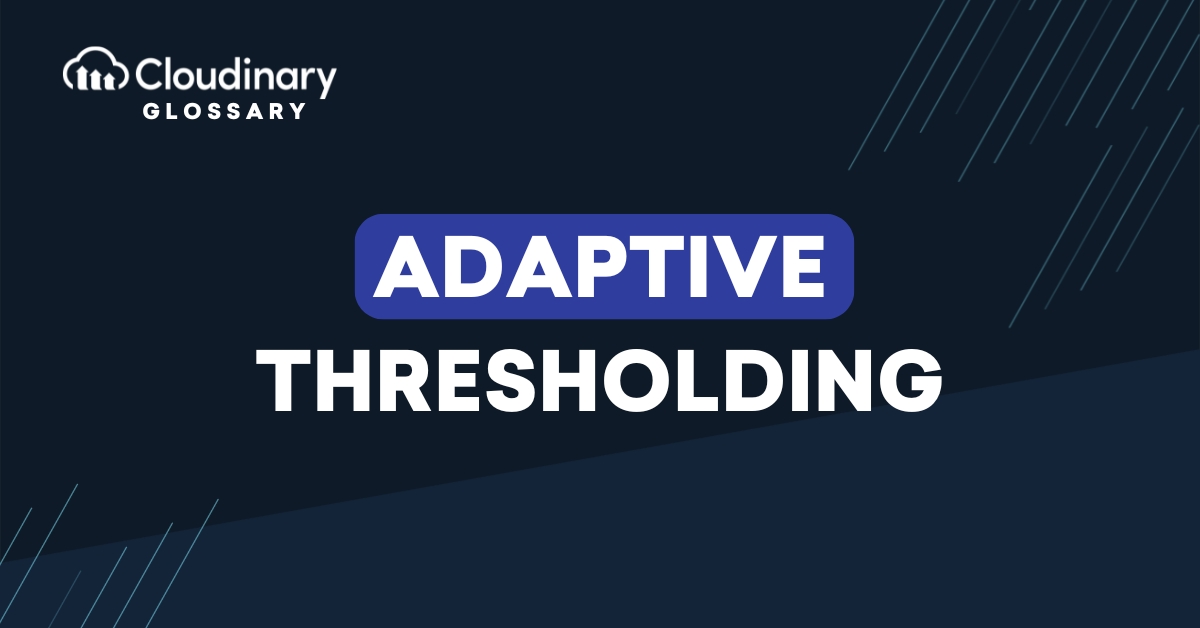
What Is Adaptive Thresholding?
Adaptive thresholding is an image processing technique used to convert grayscale images into binary images based on local pixel intensity. Instead of using a single global threshold value, it calculates different thresholds for small regions of the image. This makes it especially useful in situations where lighting or contrast varies across the frame.
The process works by dividing the image into smaller areas and computing a local threshold for each one. This threshold is based on the surrounding pixel values, allowing the algorithm to adjust to changes in brightness or shadows. Pixels are then set to either black or white depending on whether they fall above or below the local threshold.
Adaptive thresholding is widely used in document scanning, OCR (optical character recognition), and edge detection. It helps isolate objects or text from uneven backgrounds by improving contrast between foreground and background elements.
Adaptive Thresholding in Image Processing
In image processing, adaptive thresholding plays a critical role in isolating important elements. It’s frequently used in applications such as OCR, face detection, and medical imaging.
Adaptive thresholding relies on analyzing pixel intensity across smaller windows of the image. There are two main approaches to computing the local threshold:
- Mean Thresholding: The local threshold is determined by computing the mean (average) pixel intensity within a region, and comparing each pixel value to this mean.
- Gaussian Thresholding: A weighted sum of the pixel intensities in the neighborhood is used to calculate the threshold. This makes it even more sensitive to local features.
Once the threshold for a region is determined, each pixel in that region is classified as either part of the foreground (i.e., the object of interest) or part of the background. This approach works especially well for images with varying lighting conditions.
Why Is Adaptive Thresholding Useful?
Adaptive thresholding provides solutions where traditional global thresholding fails. Let’s explore why this technique is so valuable in image processing:
- Handles Uneven Illumination: In real-world scenarios, uneven lighting is a common issue. Traditional thresholding methods struggle to differentiate between the foreground and background in such conditions. Adaptive thresholding ensures better segmentation by adapting to the local intensity of the image.
- Enhances Accuracy: Adaptive thresholding is particularly useful for detailed and sensitive applications such as OCR. It ensures that text is accurately identified despite variations in brightness across the document.
- Ideal for Complex Images: Complex images with texture, shadows, or gradients demand local adjustments rather than a single global threshold. Adaptive thresholding delivers the segmentation needed to work on such images effectively.
- Versatile Applications: Its versatility makes adaptive thresholding ideal for many fields, ranging from self-driving cars and facial recognition systems to medical imaging, where precision is paramount.
Last Words
Adaptive thresholding is a groundbreaking tool in image processing that provides exceptional performance in scenarios where traditional thresholding methods fall short. By dynamically adjusting the threshold value across regions of an image, adaptive thresholding manages uneven illumination and complex textures effortlessly. It is essential for high-precision applications, ranging from OCR to medical imaging, and has become a cornerstone in modern computer vision.


